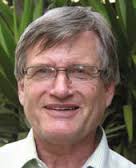
Mike S Scurrell
University of South Africa, SA
Title: Thoughts on the use of gold-based catalysts in environmental protection catalysis
Biography
Biography: Mike S Scurrell
Abstract
Gold catalysts for CO oxidation have been very well studied, particularly using titania as a support. Small nanoparticles of gold are implicated in the catalysis and support effects must also be present because there is a marked activity dependence of the support. Only gold-perovskites appear to show activity essentially identical to that of Au/titania, depending on the nature of the A and B elements present in the Au/ABO3 structure. The low temperature activity of gold for the oxidation of hydrocarbons has also been demonstrated and it has been suggested that gold may well form the basis for active autoemission control catalysts for use at low temperatures, under cold start conditions. The economics of using gold rather than the platinum group elements are also considered to be attractive. Gold anions are associated with the defect sites present in titania, but undergo spontaneous partial reduction so that a variety of oxidation states may coexist in solid catalysts. The +1 oxidation state appears to correlate best with CO oxidation activity but a role for zerovalent gold may also be contemplated. It seems possible to thrift gold by the judicious use of cyanide extraction though this reaction is not simple. High temperature applications of gold catalysts such as autoemission control catalysts have been discussed but the simultaneous use of platinum complicates the understanding of just which entities are responsible for catalysis. Nanogold particle growth must be stopped ar, at least controlled. Recently the4 use of nanoaligned rutile rods as a support for gold appears to offer a very convenient method for stabilizing nanogold. These catalysts show very limited growth of gold up to about 800 °C and offer a very real chance of designing gold only-based catalysis for emission control. The oxidation of CO remains very high even after exposure of the solids to high temperatures. The activity of gold for hydrocarbon oxidation is also well known, but the behaviour of gold in effecting NOx removal, though claimed, is less well studied. Applications in diesel exhaust systems, where device temperatures are likely to be lower are probably more immediately realizable than 3-way systems for gasoline emission control applications.

